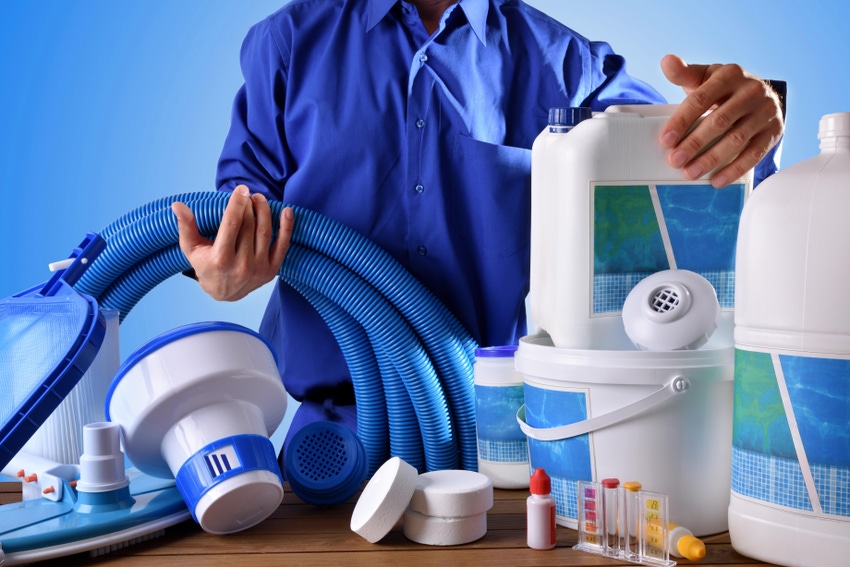4 Challenges Service Pros Faced Amid a Banner Year
Here’s how a service industry leader took on staffing, price increases and supply chain shortages to up sales over the previous blockbuster year—and what he predicts for 2023.
October 12, 2022

Despite a number of industrywide pool and spa challenges in 2022, service professionals enjoyed another banner year, thanks to ongoing post-pandemic demand.
“Last year and this year, everything has been really good for the service industry in general,” said Mark Thompson, president and owner of Absolute Pool & Spa Care and chair of the PHTA Service Council. “I’ve been hearing from other parts of the country that everybody has increased sales. It’s definitely a great year for pretty much every service company across the board.”
For Thompson, whose business is in Georgia, sales increased as much as 15%—and that’s after sales increased 35% the previous record-breaking year. “So that’s saying a lot for last year and this year,” Thompson said.
Like a lot of service firms, Thompson had more work than he could handle. Renovation was booked out 12 weeks in advance, while repair was often booked a month out. “We just stopped taking maintenance customers because we couldn’t handle anymore,” he said.
On the equipment installation side of the business, upgraded sanitation systems such as UV or salt chlorine generators were popular. And thanks to new national energy laws, such as this one in California, variable speed pumps were a popular upgrade.
Homeowners looking for more convenience also made automation upgrades a hot ticket, especially those that allow mobile control of pools and spas.
But while business was brisk, it wasn’t for the faint of heart either, thanks to ongoing pandemic-related challenges. Here’s a look at four—and how Thompson navigated them.
Staffing. Like many pros, Thompson just couldn’t find enough workers to meet the demand. He figures he could have taken as much as 40% more business if the workforce was available. But he managed the onslaught of new business by hiring strategically and streamlining in other places.
“Almost everyone I talk to is having trouble finding employees,” he said. “We had to find ways to be more efficient with existing staff.” For Thompson that meant finding new efficiencies in the office and reducing staff there to make room for more techs.
Thompson worked with the local chamber of commerce along with a variety of nonprofits to find workers who not only were willing to do the work, but also fit in with his company culture.
Gas price hikes. Like other pool pros, Thompson had to deal with unprecedented gas prices this summer—a record $4.80 per gallon in his area. To offset those costs, Thompson added a fuel surcharge of $20 per call. He also absorbed the costs by raising his hourly rate from $125 per hour to $139 per hour, along with increasing profit margins 3% to 5% on equipment across the board.
While the price increases raised some customer eyebrows, Thompson knew he had the upper hand. “When you’re able to turn away business, you can keep the customers that are willing to pay whatever it costs,” he said. “We were able to sustain that kind of business.”
Chemical and equipment price increases. Typically for service pros, price increases happen on an annual basis. But this year, Thompson said he experienced increases of 3% to 5% every few months. Popular equipment such as variable speed pumps increased as much as $300 overall. That meant that Thompson sometimes had to eat costs for equipment that was sold at one price but arrived months later at another.
“We just can’t make a phone call for every product,” he said. Still, raising prices across the board helped absorb some of those losses.
4. Supply chain delays. Along with managing costs, Thompson and other pros had the difficult task of managing customer expectations on both timing and cost.
“Sometimes we would sell something to a customer and not even know if you’re going to get the part,” he said. “You’re really trying to solve problems constantly. It used to be we’d have to solve problems with pools and spas. Now we’re having to problem-solve getting the part, getting the employees and getting our price right. We’re just in problem-solving mode more than we ever have been.”
Part of Thompson’s problem-solving involved having rental equipment on hand for customers who were facing long delays that might prevent them from enjoying their pool or spa.
But a bigger part of it simply meant communicating with customers about the status of their jobs and equipment—and the costs.
“When you have to tell a customer that your filter won’t be available for another five weeks, that’s not an easy conversation,” he said. “Occasionally we’d get people who couldn’t believe the price increases too. And in both cases, you just have to explain to them. Everyone knows what’s going on in the world.”
Looking forward to 2023, Thompson echoes most other industry pros in expecting the post-pandemic bubble to finally deflate, if not burst.
“I don’t think we’re going to see the growth like we’ve seen over the past two years,” he said. “But the beautiful side about the service industry is that people already have their pool and spa. And if they want them operating, they’re going to have to get them fixed and repaired.”
About the Author(s)
You May Also Like




